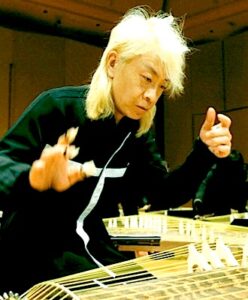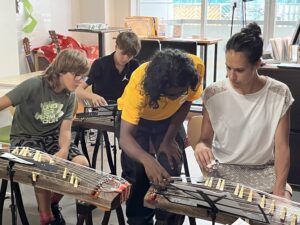The koto, Japan’s elegant 13-string zither, has resonated through the country’s history for over a millennium. Once confined to imperial courts and traditional ensembles, this iconic instrument is now experiencing a remarkable renaissance—one that honors its past while embracing bold new possibilities.
From experimental jazz clubs to viral YouTube covers, the koto is proving it’s anything but a relic of the past. Let’s explore how contemporary musicians are reinventing this ancient instrument for the 21st century.
Breaking Boundaries: The Koto’s Modern Evolution
1. Fusion with Global Music Genres
 Today’s koto virtuosos are shattering expectations by blending traditional techniques with:
Today’s koto virtuosos are shattering expectations by blending traditional techniques with:
- Jazz improvisation (Michiyo Yagi’s avant-garde performances)
- Rock energy (The Yoshida Brothers’ electrified shamisen collaborations)
- Electronic beats (DJs incorporating koto samples into EDM tracks)
- Classical crossover (Compositions for koto and symphony orchestra)
Example: Reiko Kimura’s groundbreaking album “Koto no Ne” merges ancient Japanese melodies with contemporary minimalism.
2. The YouTube Revolution
Young players are bringing the koto to global audiences through:
- Viral covers of pop songs (Taylor Swift’s “Anti-Hero” on koto has 2M+ views)
- ASMR-style playing videos that highlight the instrument’s soothing tones
- Tutorial channels making koto accessible to international learners
3. Technological Innovations
- Electric kotos with built-in effects processors
- Hybrid designs that maintain traditional sound while being more portable
- Interactive apps that help beginners learn tuning and notation
Preserving Tradition While Moving Forward
Despite these modern adaptations, the heart of koto music remains deeply connected to its roots:
The Enduring Classics
Pieces like “Rokudan no Shirabe” (Six-Step Etude) continue to be:
- Taught as foundational repertoire
- Performed in their original form at cultural events
- Used as creative springboards for new interpretations
The Rise of “Neo-Traditional” Styles
Artists like Hiromitsu Agatsuma demonstrate how to:
- Respect classical forms while injecting personal expression
- Use traditional techniques in contemporary compositions
- Collaborate across cultures without losing Japanese identity
Experience Both Worlds in Hiroshima
 At our Hiroshima Koto Workshop, we bridge tradition and innovation by offering:
At our Hiroshima Koto Workshop, we bridge tradition and innovation by offering:
✔ Traditional Lessons
- Learn authentic playing techniques
- Study classical pieces
- Understand the instrument’s cultural significance
✔ Modern Applications
- Experiment with effects and amplification
- Try composing original pieces
- Explore fusion styles
“Our goal is to honor the koto’s history while showing its incredible versatility,” says instructor Mariko Tanaka. “Every student discovers their own way to connect with this magical instrument.”
Why This Matters for Visitors to Japan
- Unique Cultural Insight
Witness how Japan balances preservation and progress - Accessible Art Form
Modern approaches make traditional music more approachable - Personal Connection
Try playing both classical and contemporary styles - Memorable Experience
Take home skills you can continue developing worldwide
The Future Sounds Like This
As 22-year-old koto prodigy Rina Miyazaki puts it: “The koto isn’t a museum piece—it’s a living, breathing art form. When I play a thousand-year-old melody one night and compose a koto hip-hop fusion the next, I’m not being contradictory. I’m showing the full potential of my cultural heritage.”
Ready to explore the koto’s modern possibilities?
Book Your Hiroshima Koto Experience Today
Experience the Koto’s Evolution
📍 Location: Central Hiroshima
⏰ Duration: 90-minute sessions available
🌐 Language: English instruction
🎵 Options: Choose traditional or contemporary focus
“The most surprising part was how naturally the ancient and modern styles complemented each other. I left feeling I’d touched both the past and future of Japanese music.” — David, UK participant
Would you like additional information on specific modern koto artists or where to hear contemporary performances in Japan?
